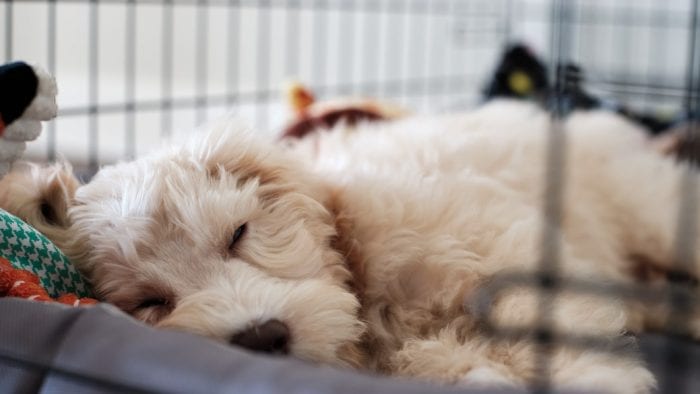Ask the Vet: Crate training your puppy
By Matthew Kearns, DVM
 My last article focused on some general potty-training techniques. This article will focus on crate training.
My last article focused on some general potty-training techniques. This article will focus on crate training.
Crate training is a wonderful way to give your puppy the guidance it needs. Crate training originates from a “den theory” observed in wild dogs. Wild dogs are nomadic by nature, but they do settle down for part of the season to mate and raise pups. Males hunt and females search out a den. This den is a safe haven away from other predators and the elements. Wild dogs also instinctively go to the bathroom outside the den. If the crate is treated the same way it can be a nice, safe area for the puppy.
The primary goal is always, ALWAYS make the crate a “safe area” for your puppy. Do not isolate the crate and never use the crate as a form of punishment. When you (or other family members) are home the door to the crate should be left open to allow your puppy to go in and out as they please.
A favorite toy or a treat before you put your puppy in the crate is a great distractor/reward. A crate is most effective, but a crate does not always have to be a crate. You can baby gate off a portion of the kitchen, give a room, etc.
Avoid leaving your puppy in the crate too long. This could lead to them soiling the crate (if left with no choice). Remember from our last article that puppies can only physically “hold it” for so long. A good rule of thumb is to count the number of months old the puppy is and add one to come up with the number of hours the puppy can hold it. For example, an 8 week (2 month) old puppy can hold it for 2 + 1, or 3 hours.
Puppies can usually hold it longer at night. However, when you first get a puppy, it would be a good idea to get out of bed to let them out (or even set an alarm clock) to take them outside (SUPERVISED) to go to the bathroom and praise them when they do. Remember that eating and drinking will stimulate the puppy to go to the bathroom, so allow extra time to bring them back outside after they eat and drink. If the puppy soils the crate just clean it up. We want the crate to be a safe area away from punishment if it is to be effective.
Do not try to force an older dog into a crate or you may be at your veterinarian’s office for broken nails and teeth (as they do anything to get out of the crate). That is not to say that you cannot crate train an adult dog but it takes time, patience, and the guidance of a behaviorist or trainer. It is much easier (and less expensive) to start at a younger age, remain patient, and consistent. I hope this helps and good luck.
Dr. Kearns practices veterinary medicine from his Port Jefferson office and is pictured with his son Matthew and his dog Jasmine. Have a question for the vet? Email it to [email protected] and see his answer in an upcoming column.







